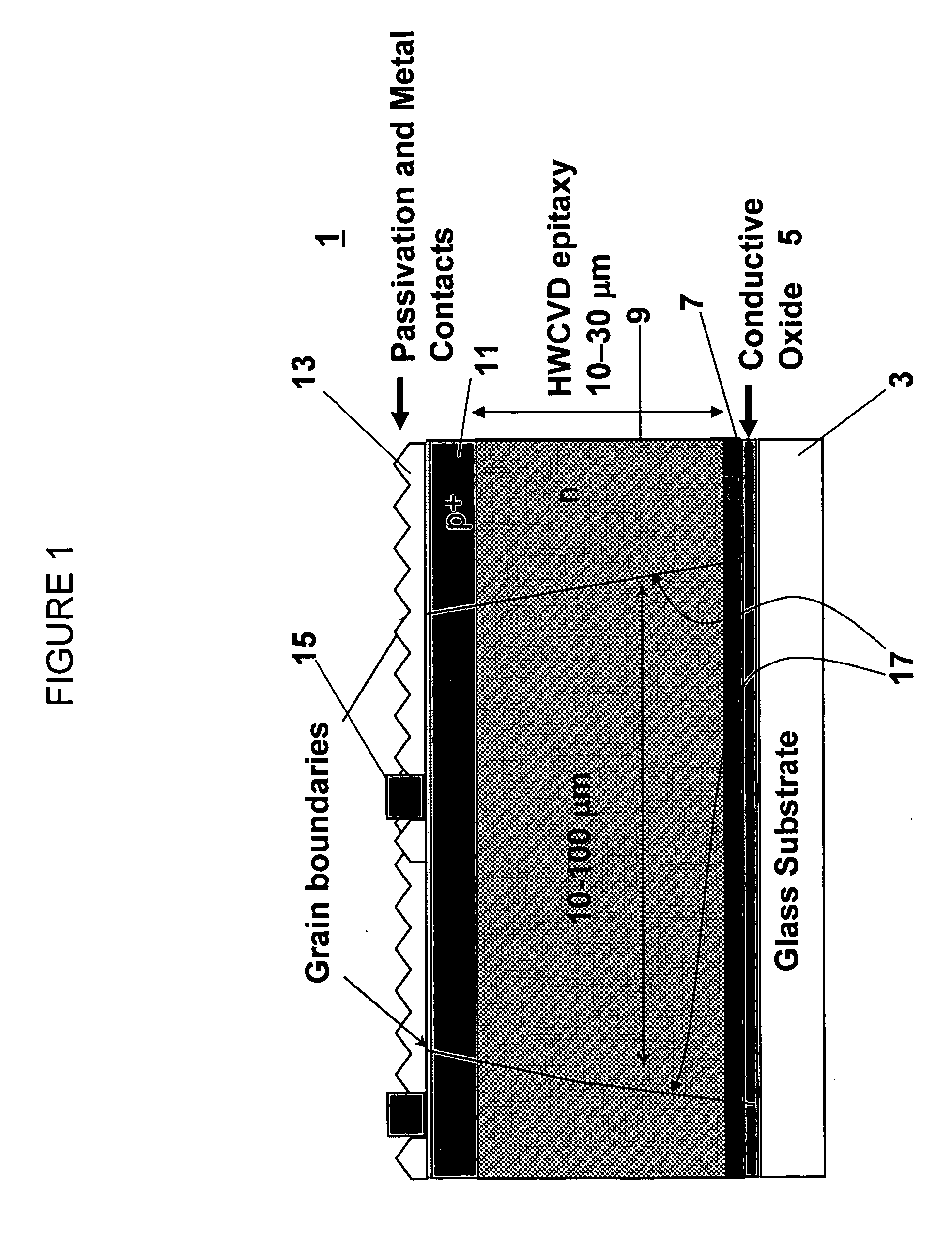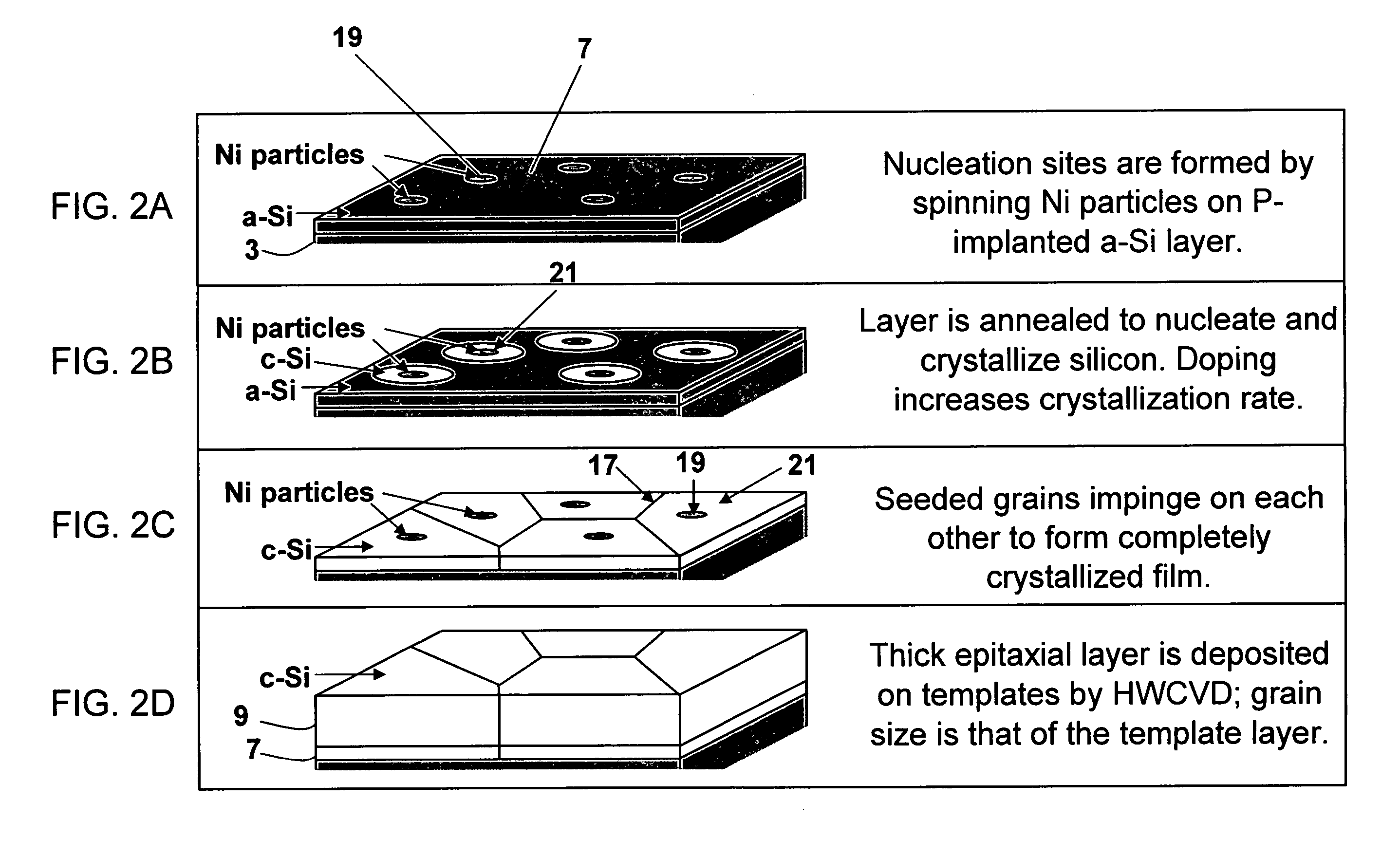Large grained polycrystalline silicon and method of making same
a polycrystalline silicon and large-grain technology, applied in the field of large-grain polycrystalline silicon, can solve the problems of substantial material loss, higher price per watt of electricity generated by these modules,
- Summary
- Abstract
- Description
- Claims
- Application Information
AI Technical Summary
Problems solved by technology
Method used
Image
Examples
first embodiment
[0013] The first embodiment provides a silicon structure comprising (a) a polysilicon template layer and (b) an epitaxial polysilicon layer formed on the template. The template is preferably a so-called selective nucleation single phase epitaxial (SNSPE) template comprising crystallization catalyst residue. In other words, the template comprises a polysilicon layer which is formed by the so-called selective nucleation and solid phase epitaxy (SNSPE), which is also known as metal induced crystallization (MIC) or catalyst mediated crystallization method. In the SNSPE or MIC process, an amorphous silicon (a-Si) or a relatively small grain polysilicon layer is formed on a substrate. This layer is then contacted with a crystallization promoting catalyst material. This may be done by forming the catalyst on the layer, by forming the layer on the catalyst or by introducing the catalyst into the layer. For example, the catalyst may comprise catalyst particles which are formed over or under ...
second embodiment
[0033] A second embodiment of invention comprises a method of making polycrystalline silicon structure, comprising annealing in a silicon containing atmosphere an amorphous silicon or polycrystalline silicon layer contacting or containing a crystallization catalyst. The anneal crystallizes the layer (i.e., crystallizes the amorphous silicon or recrystallizes a small grain size polysilicon) to form a polysilicon layer with a large grain size, such as an average grain size of 10-100 microns. This recrystallized layer may then be used as the template layer 7 for epitaxial CVD layer 9 formation of the first embodiment.
[0034] Any suitable silicon containing atmosphere may be used during the crystallization anneal. Preferably, the silicon containing atmosphere comprises a silane atmosphere. However, other silicon bearing gases may be used instead of or in addition to silane. For example, silicon and chlorine bearing gases may be used, such as silicon tetrachloride (SiCl4), thrichrosilane...
PUM
| Property | Measurement | Unit |
|---|---|---|
| thickness | aaaaa | aaaaa |
| grain size | aaaaa | aaaaa |
| softening temperature | aaaaa | aaaaa |
Abstract
Description
Claims
Application Information
 Login to View More
Login to View More - R&D
- Intellectual Property
- Life Sciences
- Materials
- Tech Scout
- Unparalleled Data Quality
- Higher Quality Content
- 60% Fewer Hallucinations
Browse by: Latest US Patents, China's latest patents, Technical Efficacy Thesaurus, Application Domain, Technology Topic, Popular Technical Reports.
© 2025 PatSnap. All rights reserved.Legal|Privacy policy|Modern Slavery Act Transparency Statement|Sitemap|About US| Contact US: help@patsnap.com



